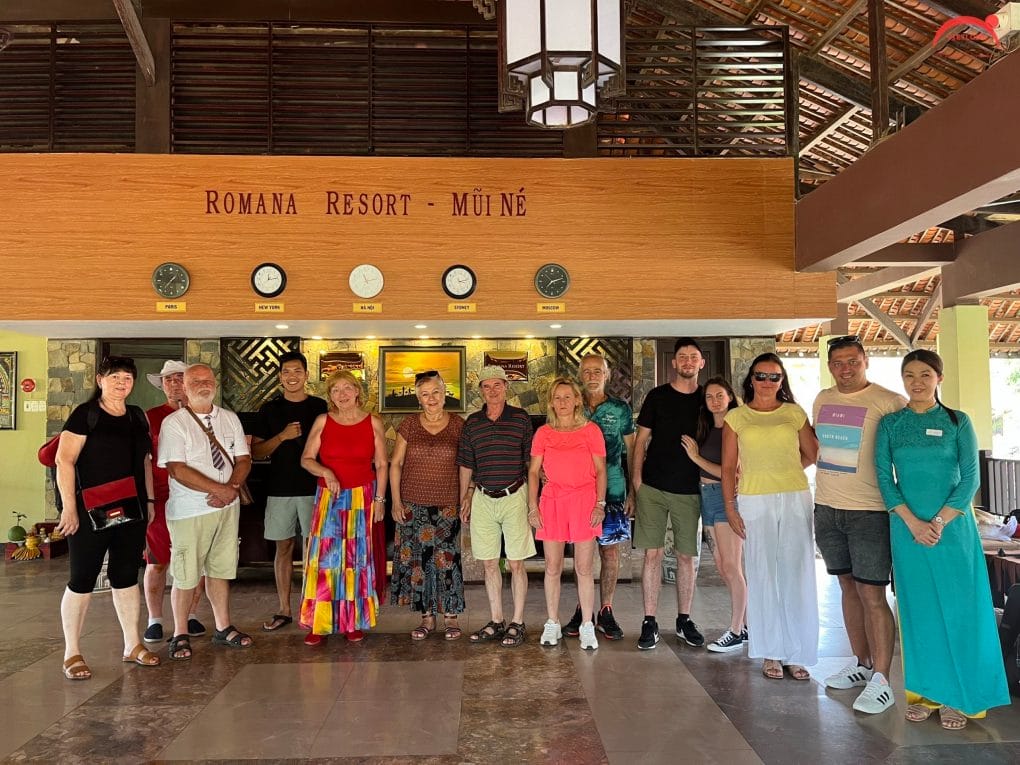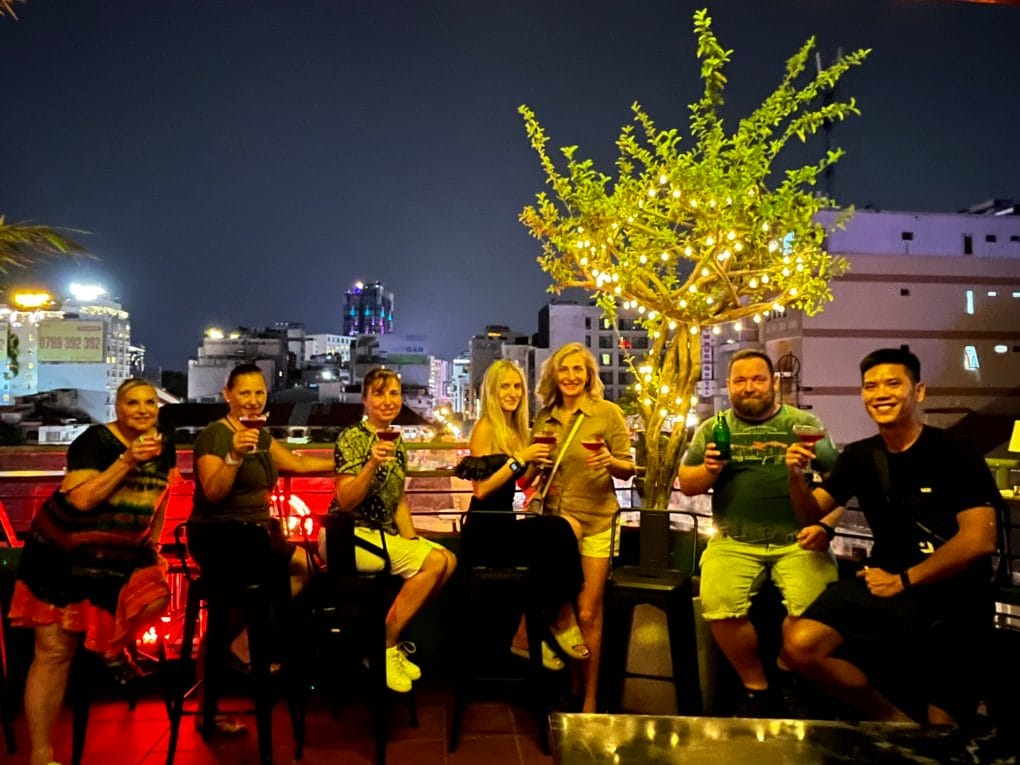At the 6th Congress of the Vietnamese Communist Party in December 1986 the Vietnamese Government launched a bold new policy of social, economic and political reform under the rubric of renovation, aimed at transforming the old command economy into a market-based one. Since that time free enterprise has been encouraged and foreign investment and dollar-spending tourists welcomed.
At the 6th Congress of the Vietnamese Communist Party in December 1986 the Vietnamese Government launched a bold new policy of social, economic and political reform under the rubric of renovation, aimed at transforming the old command economy into a market-based one. Since that time free enterprise has been encouraged and foreign investment and dollar-spending tourists welcomed.
Decades of war and suffering had left Viet Nam in poor economic shape, but reformist economic policies introduced after 1986 stimulated a period of rapid economic growth, attracting over US$30 billion of cumulative authorised foreign investment during the decade prior to 1998. Despite the negative effects of the recent South East Asian economic crisis and the devastation caused by frequent floods, annual growth rates have remained in the region of 6-9 per cent for the past few years. Viet Nam is still one of the poorest countries in Asia, with an estimated per capita income of less than US$300 per annum, but average annual inflation has fallen sharply and the economic outlook is now encouraging.
With a land area of 332,000 square kilometres, the country is well-endowed with natural resources, including the two ‘rice baskets’ of the Red River and Mekong Deltas, sizable forest cover, reserves of coal, petroleum and natural gas and hydro-electric potential.
Agriculture remains the primary activity, employing more than half of the labour force. Rice, corn and potatoes make up 50 per cent of farm output; commercial crops (rubber, soya beans, coffee, tea and bananas) and animal products make up the other 50 per cent.
As a direct result of economic reforms, Viet Nam moved from being a rice importer in the mid-1980s to become in 1997 the world’s second largest exporter of rice after Thailand.
Major industries which have flourished since the lifting of the US trade embargo in 1994 include food processing, machine building, mining and production of oil, cement, chemical fertiliser, glass, tyres, textiles, footware and ceramics. Private enterprise is now officially encouraged and at the time of writing it is estimated that over 70 per cent of domestic trade can be attributed to the private sector. By the same token all state-owned firms are now required to be profitable in order to stay in business.
Generating total revenues of c US$18.5 billion in 2003, Viet Nam’s exports include petroleum, coal, rice, agricultural products and marine products. Imports include petroleum products, machinery and equipment, steel products, fertiliser, raw cotton and grain.
The developing tourist industry was hit badly by the regional economic crisis of 1997-8 and more recently by the SARS and bird flu outbreaks of 2003-4, but Viet Nam has nonetheless managed to weather these storms to emerge as one of South East Asia’s fastest-growing tourist destinations. A campaign launched in late 1999 to promote the country as ‘A Destination for the New Millennium helped to generate a steady growth in international arrivals, which totalled 2.6 million during the year 2002; despite the SARS crisis figures for 2003 did not dip below 2.4 million. Domestic tourism is also on the increase, with a total of 13 million in 2003, 15 per cent more than 2000. Revenue from tourism in 2002 was estimated at US$1.52 billion.
At the 6th Congress of the Vietnamese Communist Party in December 1986 the Vietnamese Government launched a bold new policy of social, economic and political reform under the rubric of renovation, aimed at transforming the old command economy into a market-based one. Since that time free enterprise has been encouraged and foreign investment and dollar-spending tourists welcomed.
Decades of war and suffering had left Viet Nam in poor economic shape, but reformist economic policies introduced after 1986 stimulated a period of rapid economic growth, attracting over US$30 billion of cumulative authorised foreign investment during the decade prior to 1998. Despite the negative effects of the recent South East Asian economic crisis and the devastation caused by frequent floods, annual growth rates have remained in the region of 6-9 per cent for the past few years. Viet Nam is still one of the poorest countries in Asia, with an estimated per capita income of less than US$300 per annum, but average annual inflation has fallen sharply and the economic outlook is now encouraging.
With a land area of 332,000 square kilometres, the country is well-endowed with natural resources, including the two ‘rice baskets’ of the Red River and Mekong Deltas, sizable forest cover, reserves of coal, petroleum and natural gas and hydro-electric potential.
Agriculture remains the primary activity, employing more than half of the labour force. Rice, corn and potatoes make up 50 per cent of farm output; commercial crops (rubber, soya beans, coffee, tea and bananas) and animal products make up the other 50 per cent.
As a direct result of economic reforms, Viet Nam moved from being a rice importer in the mid-1980s to become in 1997 the world’s second largest exporter of rice after Thailand.
Major industries which have flourished since the lifting of the US trade embargo in 1994 include food processing, machine building, mining and production of oil, cement, chemical fertiliser, glass, tyres, textiles, footware and ceramics. Private enterprise is now officially encouraged and at the time of writing it is estimated that over 70 per cent of domestic trade can be attributed to the private sector. By the same token all state-owned firms are now required to be profitable in order to stay in business.
Generating total revenues of c US$18.5 billion in 2003, Viet Nam’s exports include petroleum, coal, rice, agricultural products and marine products. Imports include petroleum products, machinery and equipment, steel products, fertiliser, raw cotton and grain.
The developing tourist industry was hit badly by the regional economic crisis of 1997-8 and more recently by the SARS and bird flu outbreaks of 2003-4, but Viet Nam has nonetheless managed to weather these storms to emerge as one of South East Asia’s fastest-growing tourist destinations. A campaign launched in late 1999 to promote the country as ‘A Destination for the New Millennium helped to generate a steady growth in international arrivals, which totalled 2.6 million during the year 2002; despite the SARS crisis figures for 2003 did not dip below 2.4 million. Domestic tourism is also on the increase, with a total of 13 million in 2003, 15 per cent more than 2000. Revenue from tourism in 2002 was estimated at US$1.52 billion.






